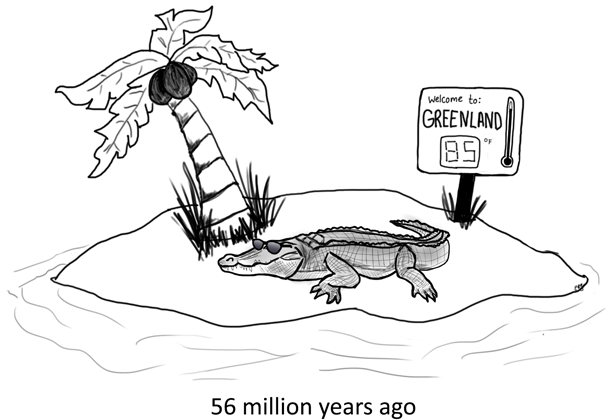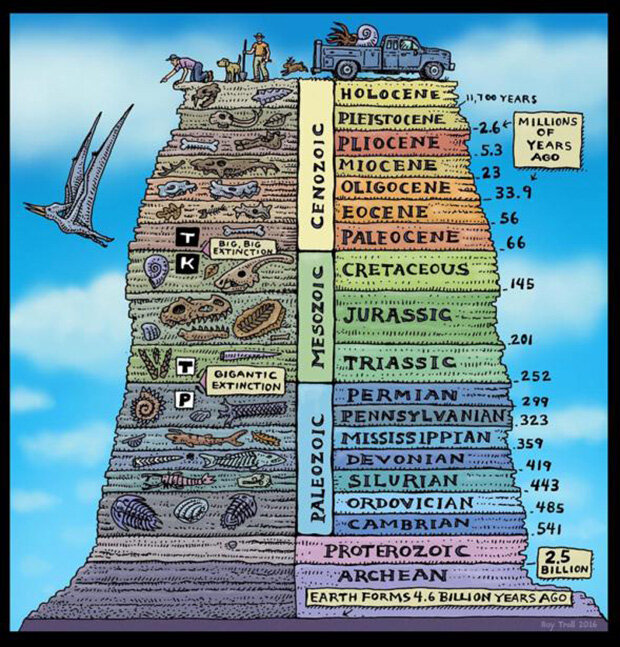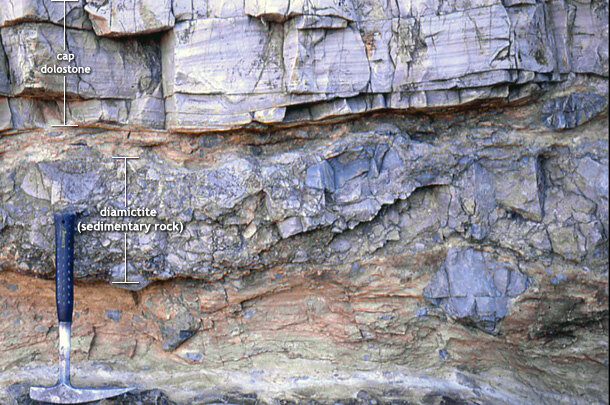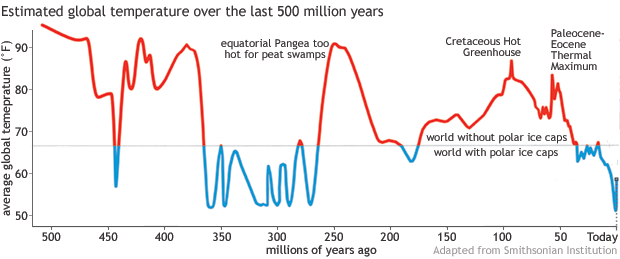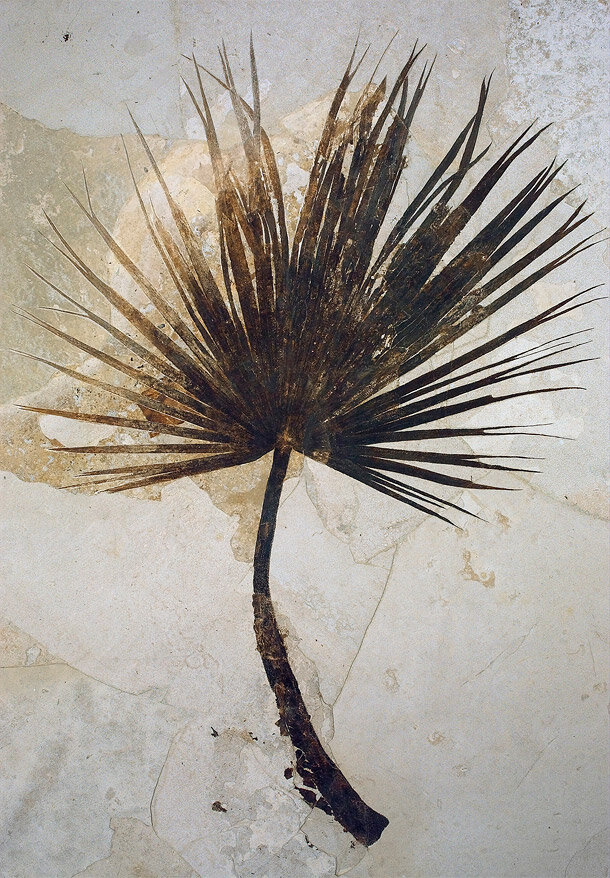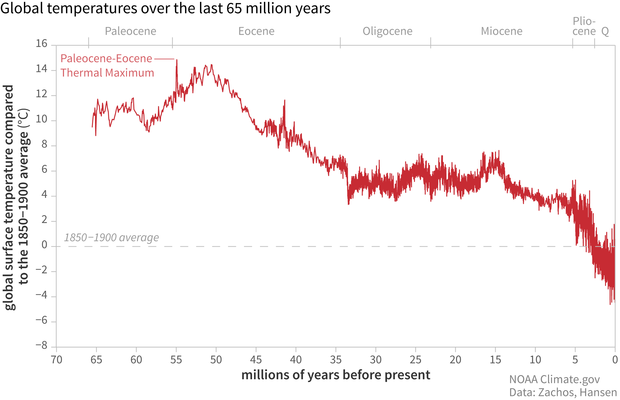What's the hottest Earth's ever been?
Editor's note (11/22/2023): Over the years, we have heard from readers who tell us that they have seen this article being cited by people who deny the reality or seriousness of human-caused global warming. To make it harder for anyone to mischaracterize this article, we are adding this note:
- The fact that Earth has been hotter in the past than it is today doesn't prove that recent global warming is natural.
- Forest fires can have both natural and human causes. So can climate change. It is partly through figuring out what caused the periods like the ones described in this article that we came to understand that carbon dioxide sets the thermostat of Earth's climate.
- The fact that Earth has been hotter in the past than it is today doesn't prove that current warming is harmless, either to people or other life on Earth.
- Some previous hot periods led to global mass extinctions.
- The hot house periods described in this article occurred millions and millions of years before humans existed. They have no bearing on whether modern human civilization can cope with the level of warming we are likely to face if we do not stop adding greenhouse gases to the atmosphere.
####
This article was first published in August 2014, and it has been updated to include new research published since then. This article is one of a three-part series on past temperatures. One is about how warm the Earth has been “lately.” The other is about the coldest Earth's ever been.
Our 4.54-billion-year-old planet probably experienced its hottest temperatures in its earliest days, when it was still colliding with other rocky debris (planetesimals) careening around the solar system. The heat of these collisions would have kept Earth molten, with top-of-the-atmosphere temperatures upward of 3,600° Fahrenheit.
Even after those first scorching millennia, however, the planet has often been much warmer than it is now. One of the warmest times was during the geologic period known as the Neoproterozoic, between 600 and 800 million years ago. Conditions were also frequently sweltering between 500 million and 250 million years ago. And within the last 100 million years, two major heat spikes occurred: the Cretaceous Hot Greenhouse (about 92 million years ago), and the Paleocene-Eocene Thermal Maximum (about 56 million years ago).
Cartoon by Emily Greenhalgh, NOAA Climate.gov.
History of hot
Temperature records from thermometers and weather stations exist only for a tiny portion of our planet's 4.54-billion-year-long life. By studying indirect clues—the chemical and structural signatures of rocks, fossils, and crystals, ocean sediments, fossilized reefs, tree rings, and ice cores—however, scientists can infer past temperatures.
None of these techniques help with the very early Earth. During the time known as the Hadean (yes, because it was like Hades), Earth’s collisions with other large planetesimals in our young solar system—including a Mars-sized one whose impact with Earth likely created the Moon—would have melted and vaporized most rock at the surface. Because no rocks on Earth have survived from so long ago, scientists have estimated early Earth conditions based on observations of the Moon and on astronomical models. Following the collision that spawned the Moon, the planet was estimated to have been around 2,300 Kelvin (3,680°F).
What the collision that spawned Earth's Moon may have looked like. Collisions between Earth and rocky debris in the early solar system would have kept the surface molten and surface temperatures blistering. Image courtesy NASA.
Even after collisions stopped, and the planet had tens of millions of years to cool, surface temperatures were likely more than 400° Fahrenheit. Zircon crystals from Australia, only about 150 million years younger than the Earth itself, hint that our planet may have cooled faster than scientists previously thought. Still, in its infancy, Earth would have experienced temperatures far higher than we humans could possibly survive.
But suppose we exclude the violent and scorching years when Earth first formed. When else has Earth’s surface sweltered?
Thawing the freezer
Between 600 and 800 million years ago—a period of time geologists call the Neoproterozoic—evidence suggests the Earth underwent an ice age so cold that ice sheets not only capped the polar latitudes, but may have extended all the way to sea level near the equator. Reflecting ever more sunlight back into space as they expanded, the ice sheets cooled the climate and reinforced their own growth. Obviously, the Earth didn’t remain stuck in the freezer, so how did the planet thaw?
A geologic history of Earth since its formation 4.6 billion years ago, divided by eon and period, and showing fossils typical of a given period. Fossils reveal not only ancient plants and animals, but also ancient climates. Artwork © Ray Troll, 2010. Used with permission.
Even while ice sheets covered more and more of Earth’s surface, tectonic plates continued to drift and collide, so volcanic activity also continued. Volcanoes emit the greenhouse gas carbon dioxide. In our current, mostly ice-free world, the natural weathering of silicate rock by rainfall consumes carbon dioxide over geologic time scales. During the frigid conditions of the Neoproterozoic, rainfall became rare. With volcanoes churning out carbon dioxide and little or no rainfall to weather rocks and consume the greenhouse gas, temperatures climbed.
What evidence do scientists have that all this actually happened some 700 million years ago? Some of the best evidence is "cap carbonates" lying directly over Neoproterozoic-age glacial deposits. Cap carbonates—layers of calcium-rich rock such as limestone—only form in warm water.
Rock formation in Namibia that shows a type of rock that only forms in warm water (cap dolostone) lying directly over a type of jumbled sedimentary rock, dated to 635 million years ago, that is commonly found at the margin of glaciers (diamictite). Image from teaching slides available at SnowballEarth.org.
The fact that these thick, calcium-rich rock layers sat directly on top of rock deposits left behind by retreating glaciers indicate that temperatures rose significantly near the end of the Neoproterozoic, perhaps reaching a global average higher than 90° Fahrenheit. (Today's global average is lower than 60°F.)
The tropical Arctic
A Smithsonian Institution project has tried to reconstruct temperatures for the Phanerozoic Eon, or roughly the last half a billion years. Preliminary results released in 2019 showed warm temperatures dominating most of that time, with global temperatures repeatedly rising above 80°F and even 90°F—much too warm for ice sheets or perennial sea ice. About 250 million years ago, around the equator of the supercontinent Pangea, it was even too hot for peat swamps!
Preliminary results from a Smithsonian Institution project led by Scott Wing and Brian Huber, showing Earth's average surface temperature over the past 500 million years. For most of the time, global temperatures appear to have been too warm (red portions of line) for persistent polar ice caps. The most recent 50 million years are an exception. Image adapted from Smithsonian National Museum of Natural History.
Geologists and paleontologists have found that, in the last 100 million years, global temperatures have peaked twice. One spike was the Cretaceous Hot Greenhouse roughly 92 million years ago, about 25 million years before Earth’s last dinosaurs went extinct. Widespread volcanic activity may have boosted atmospheric carbon dioxide. Temperatures were so high that champsosaurs (crocodile-like reptiles) lived as far north as the Canadian Arctic, and warm-temperature forests thrived near the South Pole.
Another hothouse period was the Paleocene-Eocene Thermal Maximum (PETM) about 55-56 million years ago. Though not quite as hot as the Cretaceous hothouse, the PETM brought rapidly rising temperatures. During much of the Paleocene and early Eocene, the poles were free of ice caps, and palm trees and crocodiles lived above the Arctic Circle.
Around the time of the Paleocene-Eocene Thermal Maximum, much of the continental United States had a sub-tropical environment. This fossil palm is from Fossil Butte National Monument, Wyoming. Image courtesy U.S. National Park Service.
During the PETM, the global mean temperature appears to have risen by as much as 5-8°C (9-14°F) to an average temperature as high as 73°F. (Again, today’s global average is shy of 60°F.) At roughly the same time, paleoclimate data like fossilized phytoplankton and ocean sediments record a massive release of carbon dioxide into the atmosphere, at least doubling or possibly even quadrupling the background concentrations.
Global surface temperatures were generally high throughout the Paleocene and Eocene, with a particularly warm spike at the boundary between the two geological epochs around 56 million years ago. Temperatures in the distant past are inferred from proxies, in this case, oxygen isotope ratios from fossil foraminifera, single-celled marine organisms. "Q" stands for Quaternary. Graphic produced using data from Zachos and Hansen, with help from Dr. Carrie Morrill, Director of the World Data Service for Paleoclimatology.
It is still uncertain where all the carbon dioxide came from and what the exact sequence of events was. Scientists have considered the drying up of large inland seas, volcanic activity, thawing permafrost, release of methane from warming ocean sediments, huge wildfires, and even—briefly—a comet.
Like nothing we’ve ever seen
Earth’s hottest periods—the Hadean, the late Neoproterozoic, the Cretaceous Hot Greenhouse, the PETM—occurred before humans existed. Those ancient climates would have been like nothing our species has ever seen.
Modern human civilization, with its permanent agriculture and settlements, has developed over just the past 10,000 years or so. The period has generally been one of low temperatures and relative global (if not regional) climate stability. Compared to most of Earth’s history, today is unusually cold; we now live in what geologists call an interglacial—a period between glaciations of an ice age. But as greenhouse-gas emissions warm Earth’s climate, it's possible our planet has seen its last glaciation for a long time.
References
British Geological Survey. Impacts of climate change. Accessed February 7, 2022.
Engber, D. (2012, July 5). What's the hottest the Earth has ever gotten?
Hearling, T.W., Harvey, T.H.P., Williams, M., Leng, M.J., Lamb, A.L., Wilby, P.R, Gabbott, S.E., Pohl, A., Donnadieu, Y. (2018). An early Cambrian greenhouse climate. Science Advances, 4(5), easar5690.
Hoffman, P.F. (2009). Snowball Earth. Accessed February 4, 2014.
Hoffman, P.F., Schrag, D.P. (2002). The snowball Earth hypothesis: testing the limits of global change. Terra Nova. 14(3), 129-155.
Huber, B.T., MacLeod, K.G., Watkins, D.K., Coffin, M.F. (2018). The rise and fall of the Cretaceous Hot Greenhouse climate. Global and Planetary Change, 167, 1-23.
Intergovernmental Panel on Climate Change (IPCC). (2013). IPCC Fifth Assessment Report - Climate Change 2013: The Physical Science Basis. Summary for Policymakers.
Klages, J.P., Salzmann, U., Bickert, T., Hillenbrand, C.-D., Gohl, K., Kuhn, G., Bohaty, S.M., Titschack, J., Müller, J., Frederichs, T., Bauersachs, T., Ehrmann, W., van de Flierdt, T., Pereira, P.S., Larter, R.D., Lohmann, G., Niezgodzki, I., Uenzelmann-Neben, G., … Dziadek, R. (2020). Temperate rainforests near the South Pole during peak Cretaceous warmth. Nature, 580(7801), 81–86.
Lindsey, R. (2006, March 1). Ancient crystals suggest earlier ocean. NASA Earth Observatory. Accessed February 4, 2014.
McInerney, F. A., & Wing, S. L. (2011). The Paleocene-Eocene Thermal Maximum: A Perturbation of Carbon Cycle, Climate, and Biosphere with Implications for the Future. Annual Review of Earth and Planetary Sciences, 39(1), 489–516.
Paleoclimatology: How can we infer past climates? Microbial Life Educational Resources, Montana State University. Accessed June 9, 2020.
Retallack, G.J. (2013). Permian and Triassic greenhouse crises. Gondwana Research, 24(1), 90-103.
Royer, D.L., Berner, R.A., Montañez, I.P., Tabor, N.J., Beerling, D.L. (2004). CO2 as a primary driver of Phanerozoic climate. GSA Today, 14( 3), 4-10.
Scientific American Frontiers. (2000, December 19). Deep freeze.[www.pbs.org/saf/1103/features/deepfreeze.htm] Accessed February 4, 2014.
Sleep, N. H. (2010). The Hadean-Archaean Environment. Cold Spring Harbor Perspectives in Biology, 2(6). doi: 10.1101/cshperspect.a002527
Sun, Y., Joachimski, M.M., Wignall, P.B., Yan, C., Chen, Y., Jiang, H., Wang, L., Lai, X. (2012). Lethally hot temperatures during the early Triassic Greenhouse. Science, 338(6105), 366-370.
Terrestrial Paleoclimate. Eocene latitudinal gradients.[paleoclimate.stanford.edu/research/eocene-latitudinal-gradients] Stanford University School of Earth Sciences. Accessed February 4, 2014.
University of California Museum of Paleontology. The Archean Eon and the Hadean and The Eocene Epoch. Accessed February 4, 2014.
Voosen, P. (2019). Project traces 500 million years of roller-coaster climate. Science, 364(6442), 716-717.
